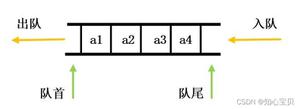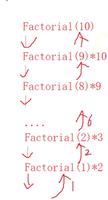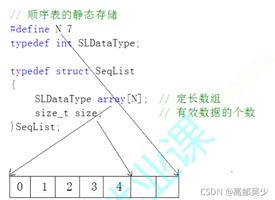C语言数据结构 link 链表反转的实现
C语言数据结构 link 链表反转的实现
链表反转,示例如下:
偶数个输入:a->b->c->d->e->f
偶数个输出:e->f->c->d->a->b
or
奇数个输入:a->b->c->d->e->f->g
偶数个输出:g->e->f->c->d->a->b
#include <stdio.h>
#include <malloc.h>
#include <stdlib.h>
/************** start of stack *************/
#define STACK_SIZE 1024
char stack[STACK_SIZE];
int top = 0;
void push(char ch){
stack[top] = ch;
top++;
}
char pop(){
top--;
return stack[top];
}
int isempty(){
return 0 == top;
}
void test_stack(){
push('a');
push('b');
push('c');
push('d');
while(!isempty()){
printf("pop ch: %c\n", pop());
}
}
/************** end of stack *************/
struct _node{
char data;
struct _node *next;
};
typedef struct _node node, *plink;
plink init_link(){
plink pl;
pl = (plink)malloc(sizeof(node));
// check malloc success or not
if(NULL == pl) {
printf("malloc memory fail...");
return NULL;
}
// init link head
pl->data = '\0';
pl->next = NULL;
return pl;
}
void input_data(plink pl, char data){
plink p = pl;
while(p->next){
p = p->next;
}
plink node = NULL;
node = (plink)malloc(sizeof(node)); // malloc a new node
// add data
if(NULL != node){
node->data = data;
node->next = p->next; // last next is NULL
p->next = node;
p = node; // p point last node
}
}
void output_link(plink pl){
if(NULL == pl){
printf("plink is null");
return;
}
plink p = pl->next; // already check pl is NULL, so here is ok
while(NULL != p){
printf("%c -> ", p->data);
p = p->next;
}
printf("\n\n");
}
// push and pop stack
plink revert_link2(plink pl){
plink p = pl;
while(p->next){
// printf("p->data: %c\n", p->next->data);
if(p->next->next){
push(p->next->next->data);
push(p->next->data);
p = p->next->next;
} else {
push(p->next->data);
p = p->next;
}
}
while(!isempty()){
printf("%c -> ", pop());
}
printf("\n\n");
return NULL;
}
plink revert_link(plink pl){
if(NULL == pl){ // check link is NULL
return NULL;
}
int link_len = 0;
plink tmp_pl = pl->next;
while(tmp_pl){ // count link count
link_len++;
tmp_pl = tmp_pl->next;
}
// link length is no more than two node(s)
if(link_len <= 2){
return pl;
}
// link length is more than two nodes
return revert_link2(pl);
}
int main(){
plink pl = NULL;
pl = init_link(); // init link head
input_data(pl, 'a'); // add data
input_data(pl, 'b');
input_data(pl, 'c');
input_data(pl, 'd');
input_data(pl, 'e');
input_data(pl, 'f');
input_data(pl, 'g');
output_link(pl);
plink pl2 = revert_link(pl);
output_link(pl2);
return 0;
}
/****
revert_link.c
linux gcc compile
gcc revert_link.c -o revert_link && ./revert_link
output result:
a -> b -> c -> d -> e -> f -> g
g -> e -> f -> c -> d -> a -> b
or
a -> b -> c -> d -> e -> f
e -> f -> c -> d -> a -> b
****/
间隔螺旋反转:
输入: a -> b -> c -> d -> e -> f
输出: b -> a -> d -> c -> f -> e
plink revert_link3(plink pl){
if(NULL == pl){
printf("plink is null");
return NULL;
}
plink p = pl;
plink first = p->next;
while(NULL != first){
plink second = first->next;
if(NULL != second){
first->next = second->next; // third node
second->next = first; // revert two nodes
first = first->next;
p->next = second;
p = second->next;
}
}
return pl;
}
如有疑问请留言或者到本站社区交流讨论,感谢阅读,希望能帮助到大家,谢谢大家对本站的支持!
以上是 C语言数据结构 link 链表反转的实现 的全部内容, 来源链接: utcz.com/z/319509.html






